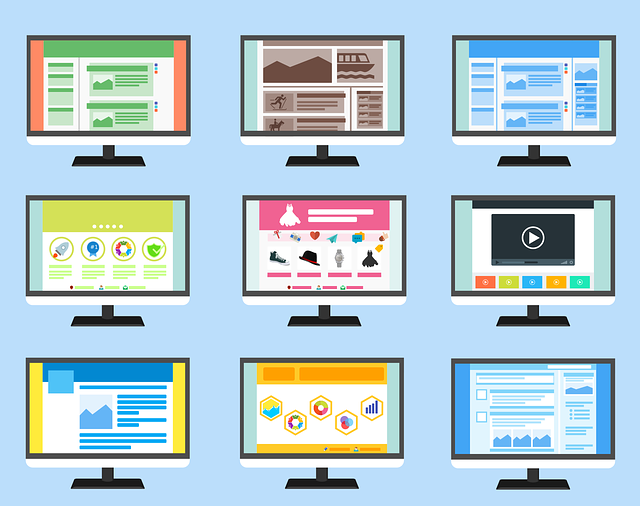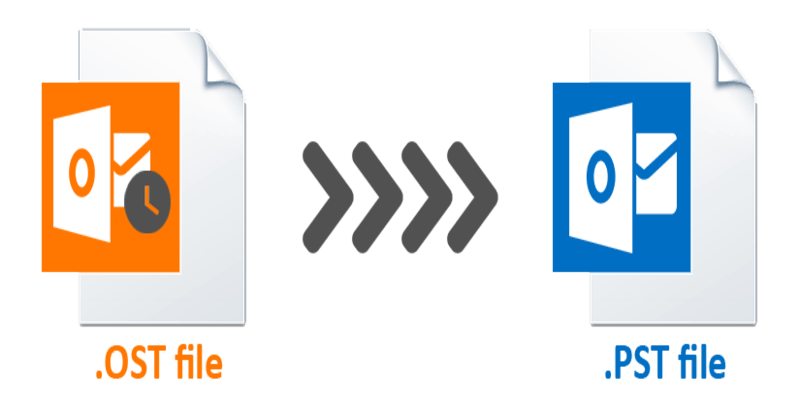Websites today have become more than just a screen with a few web pages displaying information. In fact with the growing time, it has become necessary to have an online presence in order to efficiently interact with your customers, sell products, and provide a means for customer feedback. To attract new customers and drive sales, it’s important to have a professionally designed and developed website with a good user interface. Before getting into the details of testing website, let’s see what is the importance of a good website.
A good website should let visitors easily find the information they need and let them quickly navigate your site. If you’re like most business owners, you probably put a lot of thought into coming up with your core ideas and making sure that your site has all the content it needs.
However, did you consider how easy it is for visitors to actually use your site? If not, you may need web applications for testing the website. Web application testing is a part of software testing that focuses on applications that run on the World Wide Web. These applications can be websites, web applications, or mobile apps. Testing a website with automated methods can help you.
Introduction to Web Testing
Web testing is the process of making sure that websites and web applications are working as they should. It’s a way to make sure that users get the best experience possible. Testing for web applications is in a way different from testing for other kinds of applications such as desktop, mobile, and enterprise.
- Organizations that develop web applications need to test their products before releasing them. Web testers can help organizations do this by designing test strategies, writing test cases and executing test scripts, automating the testing process, and reporting defects found during the testing process.
- There are many ways for a web tester to help ensure that users have a positive experience when using a web application. For example, by using automation tools to simulate user actions, the tester can examine the design process of an application and identify potential problems that could occur during actual use.
- A well-designed automated script will interact with a website like a real user would, making it possible for the tester to discover defects in any parts of an application or website that could cause problems for a real user.
Testing a Website is the process of making sure that web applications work properly. Testers may also test websites and mobile applications on different platforms or browsers. Moreover, web testing has been growing at a rapid scale now.
Ways of Testing a Website
Web testing is part of the larger field of software testing, which covers any type of application or software that’s meant to be used by other people. Web testing concerns itself with web applications, which are applications that are only accessible via Internet browsers. However, to test a website, one needs to go through the ways given below to make sure that the website is working well.
-
Testing the Functions
Functional testing is a serious aspect of software testing. It requires a thorough knowledge of both the application and other related programs connected with it. The main objective of functional testing is to check if an application is according to the specifications and requirements are given by the customer or any third party.
- This type of testing is basically performed by Quality assurance engineers and they even keep track of several factors while performing this type of testing. If a comprehensive functional test is run on the software, then it ensures that every possible usage of a certain piece of code has been checked and worked fine.
- The testing will cover different factors like error handling or failure conditions. Some of the inputs and outputs can be expected to be either erroneous or unexpected by the programmer because of the nature of the software.
Mainly, the main aim of Functional Testing is to make sure that all the links attached to the images along with responsive designs are working well or not. Furthermore, database testing is also done in it.
-
Testing by using the website
A usability test allows the web designer to find out how a common user will respond to an onscreen design. As an art, it is the process of finding solutions to practical problems of everyday life. It tries to find answers for mostly the questions that matter most to users.
- In a usability test, one can easily decide whether or not the site is easy to use and understand. Testing for navigation ease is essential for any kind of website or application. In a browser, users can move around easily. However, this does not work for Windows applications that rely on menus and other interfaces.
- In such cases, navigation means testing the site to see whether there are any doors hidden in the wall or if any user interface elements are absent. Navigation should be tested along multiple paths to ensure that users can get to their desired pages even if they use link lists or path descriptions from search engines.
Apart from navigation ease, problems like general appearances along with user satisfaction are taken in context and hence are worked on to make the website a perfect one. Testing the Website has been an essential part of every website owner.
-
Testing for the Compatibility
Compatibility testing is an activity performed in the software development cycle to determine whether the application is compatible with various browsers and platforms. Normally, this test is performed using automated tools.
- The purpose of Compatibility testing is to check whether a website or web application is fully functional and viewable by users with all browsers. This becomes important when the services of the organization are provided on different platforms such as web, mobile, offline, etc. in order to provide access to their services to customers from different platforms.
- Compatibility testing also ensures that all pages of the website, when accessed via different browsers, are displayed properly without any error, fault, or bias. And all data on the websites are displayed correctly and are operable upon proper loading.
Compatibility tests ensure that the web application renders as per the given requirements and specifications are met. These tests can either be manual or automated.
-
Testing for the Security
Security has become a major concern nowadays owing to the growth in Internet and mobile technologies. Security testing has emerged as an important component of software development and maintenance.
- The main aim of security testing is to assure that the application has no security flaws. Security testing can be divided into two categories, black box, and white box testing – both utilize tools to identify possible vulnerabilities in an application.
- Due to the explosive growth of social media platforms, cloud-based applications, and smartphones, security testing is now an essential part of software development.
Performing security testing is the only way to ensure your web applications don’t contain any vulnerabilities that can be exploited by an attacker. It’s not enough just to secure the web server, you must also test the web application on its own merits.
-
Testing for the Performance
Performance testing assesses the end-to-end performance of an app or a website which means that it verifies how well the app adapts to various scenarios. It is essential for any application development cycle, so that appropriate correction can be made before the product is released.
- A thorough performance test includes not only checking the speed of the application but also testing it over various browsers and devices. For example, if you’re developing a web app, then you need to ensure that it works not just on desktops/laptops but also on tablets, smartphones and other devices as well.
- Performance testing is essential for the development of any application, be it web-based or standalone. Without taking this test into consideration, a lot of work might get wasted in the systematic and efficient development of the software.
As more and more people rely on web applications, performance testing has become an integral part of software testing. This is highly important to ensure that the customer’s experience exceeds expectations.
-
Testing for the Interface
Interface testing endeavors to identify or determine as many bugs and errors as possible. This can be done visually or with the help of automated testing tools. The objective of this type of testing is to check whether the user interface is consistent with the actual business logic of the application.
- It can also be employed to check how easy it is for a new user to get started using the application. The purpose of a testing interface is to examine if the workflow or website is useful or advantageous to the user. It also evaluates if users can access the information they need to use and act upon it. The test cases of this type of testing include all forms of links that have been developed by the web developer.
- Tests performed using interface test tools are of the black box variety. The testers automate the actions performed by a user and observe rather than interact with the web-based application or system under test. A major advantage of this type of testing is its simplicity.
The object of the interface test is to ascertain that the users can find their way around the website easily and know what they are getting into. Hence the website design should be such that it provides all necessary information to users in an aesthetically appealing.
Tools for Testing Website
Tools for automated web application testing are programs that allow you to better test an app’s functionality. The tests exist in a format that is readily understandable by the software. Automated testing tools do not have to have high-level programming skills in order to use them. The users only need a general familiarity with web browsers, databases, and development tools in order to function properly. This also eliminates the need for a large development or test teams, as individual programmers or testers can run the tests with little or no training.
-
Scriptworks
If you need to perform automated tests, but you don’t have the time or resources to build and maintain a test suite, Scriptworks is the perfect solution to automate all of your testing needs. It has everything you need, such as test packs, different types of tests, logging, and reporting. And it’s easy to use whether you’re an experienced tester or a beginner.
-
LambdaTest
LambdaTest offers a blazing-fast and reliable test automation cloud. The platform offers to run Selenium, Cypress, Puppeteer, Playwright, and Appium automation tests on reliable, scalable, and secure cloud-based infrastructure. LambdaTest offers instant on-demand access to 3000+ desktop and mobile environments for browser and app compatibility testing, covering the most diverse range of devices and environments.
-
SoapUI Pro
SoapUI Pro is increasingly being used by large software development companies for functional testing and web services validation. Being open-source means that you don’t have to pay for SoapUI Pro. Although there are some paid support and training options available. This makes it a good choice for testing any web service that is available on the public internet.
Wrapping Up
Web application testing is a distinct testing process that ensures the application performs as it was designed and meets the needs of the business. It is performed for virtually every type of web application, whether it is custom developed or a commercial off-the-shelf product. Web app testing makes sure that these applications operate as expected under different environments and under varying conditions such as concurrent usage, operating system usage, browser types and versions, different language or regional settings, and so forth.
The software tester can use web application testing techniques to explore the possible ways a user can work with the web application to find out potential problems early in the development cycle itself. One reliable platform to perform website testing can be LambdaTest – that’s It is trusted by over 1 million developers and 500+ enterprises in over 130+ countries.





